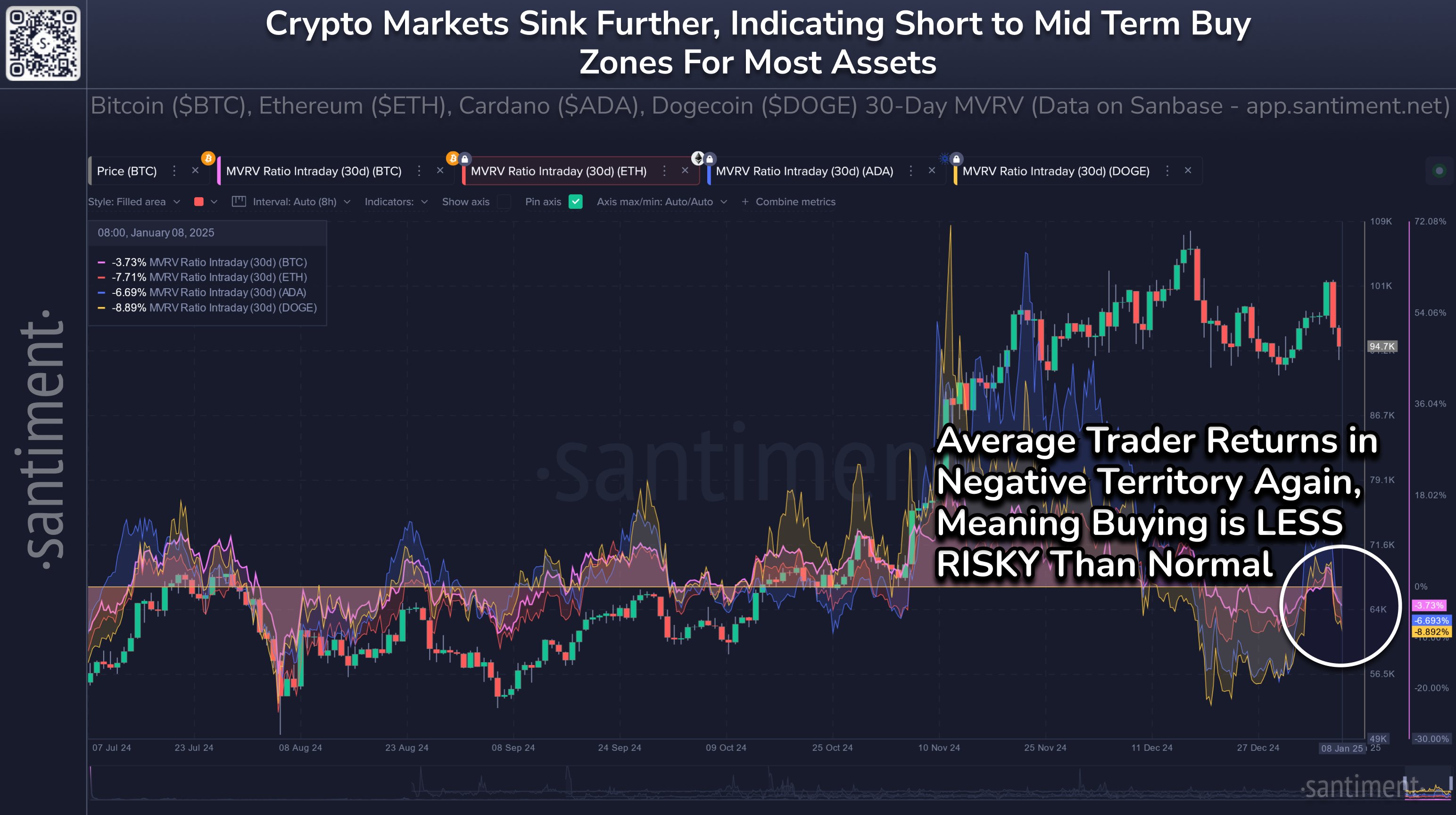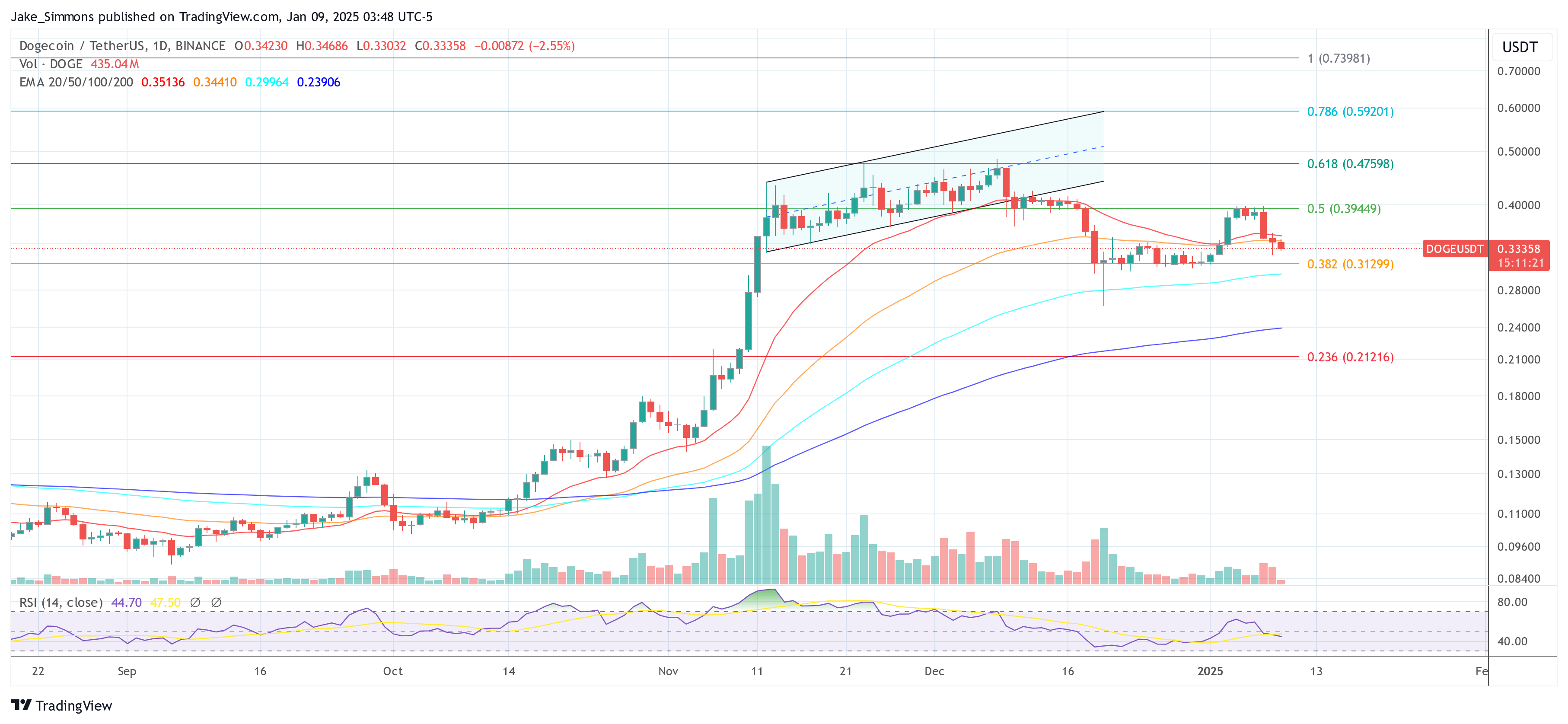and the distribution of digital products.
DM Television
Dogecoin Hits A ‘Blood In The Streets’ Moment: Buy Or Sell Now?
Dogecoin (DOGE) has again found itself in the crosshairs of market watchers, with a “blood in the streets” moment emerging according to data from on-chain analytics firm Santiment. The firm’s latest research, shared on January 8 via X, highlights a series of negative MVRV (Market Value to Realized Value) ratios across the crypto landscape—encompassing Bitcoin (BTC), Ethereum (ETH), Cardano (ADA), and Dogecoin.
“Average trading returns are a great representation of whether ‘buying low’ or ‘selling high’ is actually the right timing,” Santiment stated, stressing that current on-chain metrics point toward an environment where many crypto assets are sitting in oversold territory.
“When MVRV’s are negative, this means a buy or addition to your holding is doing so while others are already at a loss. Historically, these ‘blood in the streets’ moments are when professional traders make money,” Samtiment writes.
The data Santiment published includes the 30-day MVRV ratios for four major assets as of January 8. Bitcoin’s MVRV ratio is at -3.73%, Ethereum’s at -7.71%, Cardano’s at -6.69% and Dogecoin’s at -8.89%.

In simple terms, MVRV compares the total market capitalization of a cryptocurrency (its “Market Value”) with the total cost basis of holders (its “Realized Value”). A negative MVRV often indicates that the average holder is currently underwater on their position.
For Dogecoin, the -8.89% MVRV ratio suggests that—on average—investors who acquired DOGE in the last 30 days are sitting on notable unrealized losses. This contrasts with BTC’s less pronounced -3.73%, indicating that Dogecoin’s short-term holders are, on average, deeper in the red relative to Bitcoin’s. Ethereum (-7.71%) and Cardano (-6.69%) also face negative territory, but their holders are faring slightly better than Dogecoin over the past month.
Because DOGE’s MVRV is the most negative among the four mentioned, there is potential for a stronger recovery bounce if market conditions stabilize. However, it also underscores higher risk if broader crypto sentiment remains fragile. As Santiment noted, traders often scan for negative MVRV as a potential opportunity to “buy low,” but this is by no means a guarantee of immediate upside.
Buy Or Sell Dogecoin Now?Santiment’s analysis further emphasizes how macroeconomic forces have accelerated the crypto market’s recent sell-off. On Tuesday, January 7, US bond yields surged following unexpectedly robust economic indicators, with the 10-year Treasury rising to 4.67%.
Much of the market anxiety focused on the higher-than-expected ISM Prices Paid Index, a metric that can herald inflation, as well as a surprise uptick in the JOLTS job openings data. With signs of labor market tightness and possible inflation pressures, investors pivoted to risk-off strategies, hitting crypto assets across the board.
“Crypto markets sink further, indicating short to midterm buy zones for most assets,” reads Santiment’s published chart. In this vein, Dogecoin’s current downturn lines up with the broader market narrative. If yields and inflation concerns continue to dominate headlines, we can anticipate more cautious capital flows into risk assets. Conversely, any signal of cooling inflation or a less restrictive Federal Reserve stance might catalyze a rally—one that could be amplified by negative MVRV ratios across the board.
Nevertheless, the contrasting signals make for a tricky trading environment. On one hand, Santiment’s metrics point to advantageous historical conditions for those looking to accumulate, notably for DOGE at -8.89% MVRV. On the other, uncertain macro data—ranging from Treasury yields to inflation prints—could hamper any near-term recovery.
For now, Santiment’s outlook is measured: “Do not assume these opportunity zone signals will lead to an immediate turnaround. But probabilities are pointing to at least a short to mid term turnaround for crypto shortly, assuming economic or geopolitical factors don’t get in the way.”
At press time, DOGE traded at $0.33.

- Home
- About Us
- Write For Us / Submit Content
- Advertising And Affiliates
- Feeds And Syndication
- Contact Us
- Login
- Privacy
All Rights Reserved. Copyright , Central Coast Communications, Inc.